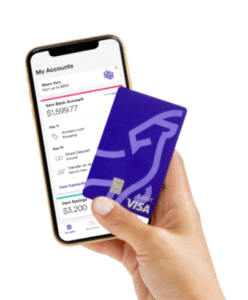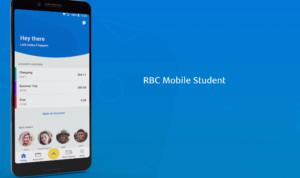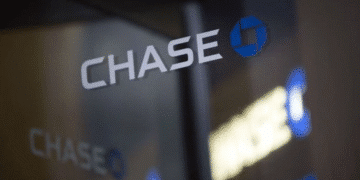Inside look: New data drives banks’ mobile UX
Each day, KeyBank’s digital team receives two reports. To start the day, the team receives a qualitative report with subjective feedback from customers detailing problems or suggestions. A few hours later at around 11 a.m., employees get a quantitative report with data on usage from the previous day.

“What we start with is the qualitative, ‘How are people feeling?’” said Stephen Schroth, executive vice president and head of consumer digital banking at the Cleveland-based KeyBank, which has more than $170 billion in assets. “But we’re not losing sight of the quantitative metrics, the hard business metrics that we need.”
For years, banks have strived to create more engaging mobile apps that mirror the success of social media apps on which the average American spends more than two hours per day, according to Statista. While the task-oriented nature of banking app functions makes it hard to achieve this level of engagement, banks are using customer data and feedback in inventive ways to make their apps more inviting.
Not your father’s focus group
For banks, pre-launch focus groups and the occasional survey are no longer enough to ensure customers are satisfied with new digital features, and KeyBank takes an iterative approach to its product development. According to Schroth, the bank rolls out new features in waves to 5% of customers at a time and asks for a thumbs-up or a thumbs-down. The bank also examines app store ratings and customer service feedback to get a better feel for how often customers are engaging, and how they feel about the app.
But, gathering data alone isn’t enough. KeyBank has a group that synthesizes the qualitative data to show how many calls came in for specific features. Plus, if multiple digital team members noticed trends in the morning report, the team can sense if there is a widespread problem or just a one-off issue. Schroth said this approach is accelerating the bank’s tech development speed — KeyBank has released about 50 new features this year compared to just 10 three years ago.
A few hours south of Cleveland on I-71 , Cincinnati-based Fifth Third uses co-creation sessions to learn what customers want from a banking app. Pat Saad, director of digital identity at the $202 billion asset bank, said Fifth Third uses a technique called “card sorting.” Customers can map out the mobile journey with cards delineating the most important features for the home screen, in addition to other areas of the app.
Some banks opt for a more subtle approach than letting customers design the mobile journey. San Francisco-based Varo Bank, which gained a national bank charter in July, uses “desirability testing” to discover the emotions its app elicits in customers, who are shown images from the app and asked to pick from a list of adjectives to describe how each screen makes them feel. August de los Reyes, chief design officer at Varo, said the technique came from work he did at Microsoft, where he was the head of design for Xbox.
“In the list are moods that we’re aiming for, and there are some which are the opposite,” de los Reyes said. “Is this reassuring or calming? Also on the list would be, ‘Does it make you feel anxious?’” He added that Varo is currently working on a design update with hopes to evoke feelings of inclusivity, control, peace of mind and connection.

In addition to qualitative surveys, focus groups and in-depth interviews, Varo uses longitudinal studies in which bank customers agree to do monthly check-ins with Varo for a year or more, showing the bank the long-term effects Varo’s services have on customers.
Banks must also contend with the different tendencies of different customers. Not every customer navigates mobile the same way, KeyBank’s Schroth said, so the bank ensures customers can find features through multiple avenues.
Customers can make payments in the KeyBank app, for example, by pressing a button at the bottom of the home screen, or they can use a button from the account summary screen. Other customers make payments using the search function. Certain app features have seen a 200% usage increase because the bank has made them easier to find and available in multiple locations. Banks need “a way that you can have all of those things without the app becoming cluttered,” Schroth said.
North of the border at Toronto-based RBC, which has $1.3 trillion in assets, quantitative metrics are an important tool, but they need to be used responsibly to ensure the bank is focused on a strong customer experience. Although dwell time is an important engagement metric for the bank, customers shouldn’t be spending more time in the app simply because the app is tricky to navigate.
“We track navigation patterns,” said Jesus Gorriti, vice president of digital design at RBC. “If we see people going back and forth, that means navigation is not working.”
To improve navigation, RBC shows a handful of features as soon as customers open the app. In addition to balances, customers see the AI-based savings and budgeting tool NOMI, as well as one or two additional features, depending on the time of year. For instance, during tax season customers typically see relevant bank features. RBC analyzes the questions customers are searching throughout the year to gauge what is relevant and when.
NOMI has proven to be a major driver of engagement for RBC’s app. Whereas the average bank customer spends about three minutes in the app, NOMI users spend about eight. The bank has about 5 million mobile active users, and customers log in about 100 million times per month, with each customer averaging about 20 logins per month. Customers make about 300 million transactions per year on the app.
A marketplace vision
Banks are racing to create personalized mobile experiences through customer data. The real key to increasing customer engagement, however, might be in going a step further to simplify customers’ lives. According to Lane Martin, a partner at the financial services consultancy Capco, banks shouldn’t be satisfied with offering their own products based on customers’ profiles.
“There’s a certain set of merchants which you either shop now or would like to shop,” Martin said. “[Merchants] want to find you as a customer, too. I think there’s the ability for banks to play a more active role in that marriage between product placement outside of financial services and truing up the banking side of the equation, too.”
Banks already know much about their customers’ financial situations based on factors like income, location and mortgage payments — information that could also reveal where customers are interested in shopping. An affluent customer, for example, might be interested in a Peloton bike or golf clubs; banks have an opportunity to connect customers with deals on these products directly in their apps, taking legwork away from consumers and increasing mobile app engagement.

Although banks want increased mobile engagement, it can’t all be fun and games. Social media might have impressive engagement numbers, but banks don’t want to cheapen their apps by adding excessive social features.
“People like to keep things separate,” RBC’s Gorriti said. “Banking is a serious thing. It’s not a toy.” When RBC was developing its Mobile Student Edition app for younger customers, the bank deliberately avoided too much of a resemblance to social media because target consumers had told the bank they take their finances more seriously than social apps.
See also: The rise in mobile banking: Truist Bank, US Bank and Wells Fargo
KeyBank’s Schroth echoed this sentiment, saying that rather than adding extra features to lure customers into the app, the bank prioritizes making it fast and easy to open, so that even a fleeting thought about their finances will spur customers to open the app.
As for the features banks can take away from social media without mimicking it too closely, Varo’s de los Reyes said customer profiles can have practical benefits around peer-to-peer payments or posting to a customer forum. Profiles could also help Varo customers connect with one another.
“That’s a kind of atomic building block as we start introducing more channels for exchanging information with other users, or maybe enabling users to form small groups around similar topics, similar geographies or similar life situations,” de los Reyes said. “We can enable people to form those microcommunities.”












